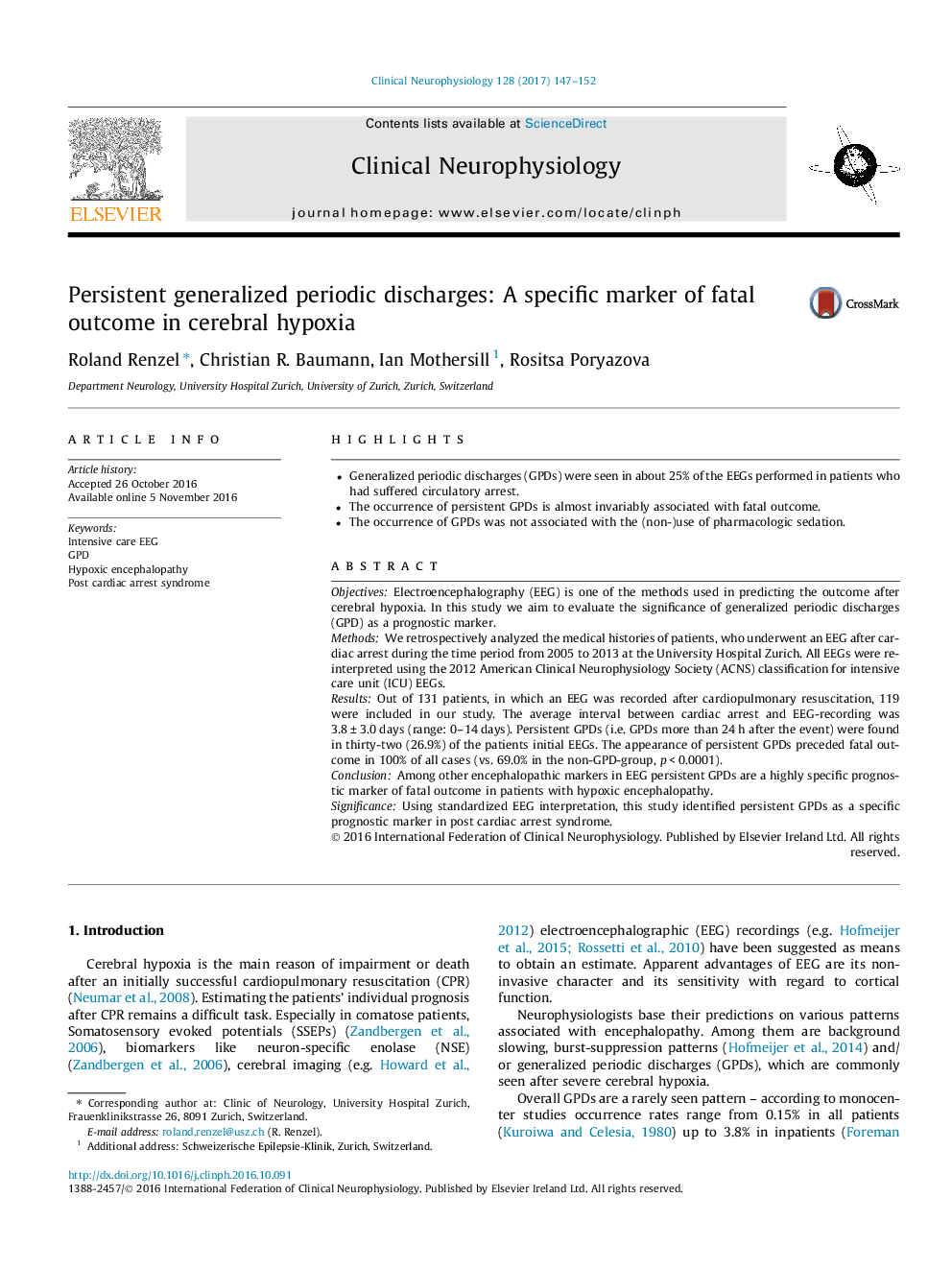| Article ID | Journal | Published Year | Pages | File Type |
|---|---|---|---|---|
| 5627460 | Clinical Neurophysiology | 2017 | 6 Pages |
â¢Generalized periodic discharges (GPDs) were seen in about 25% of the EEGs performed in patients who had suffered circulatory arrest.â¢The occurrence of persistent GPDs is almost invariably associated with fatal outcome.â¢The occurrence of GPDs was not associated with the (non-)use of pharmacologic sedation.
ObjectivesElectroencephalography (EEG) is one of the methods used in predicting the outcome after cerebral hypoxia. In this study we aim to evaluate the significance of generalized periodic discharges (GPD) as a prognostic marker.MethodsWe retrospectively analyzed the medical histories of patients, who underwent an EEG after cardiac arrest during the time period from 2005 to 2013 at the University Hospital Zurich. All EEGs were re-interpreted using the 2012 American Clinical Neurophysiology Society (ACNS) classification for intensive care unit (ICU) EEGs.ResultsOut of 131 patients, in which an EEG was recorded after cardiopulmonary resuscitation, 119 were included in our study. The average interval between cardiac arrest and EEG-recording was 3.8 ± 3.0 days (range: 0-14 days). Persistent GPDs (i.e. GPDs more than 24 h after the event) were found in thirty-two (26.9%) of the patients initial EEGs. The appearance of persistent GPDs preceded fatal outcome in 100% of all cases (vs. 69.0% in the non-GPD-group, p < 0.0001).ConclusionAmong other encephalopathic markers in EEG persistent GPDs are a highly specific prognostic marker of fatal outcome in patients with hypoxic encephalopathy.SignificanceUsing standardized EEG interpretation, this study identified persistent GPDs as a specific prognostic marker in post cardiac arrest syndrome.
